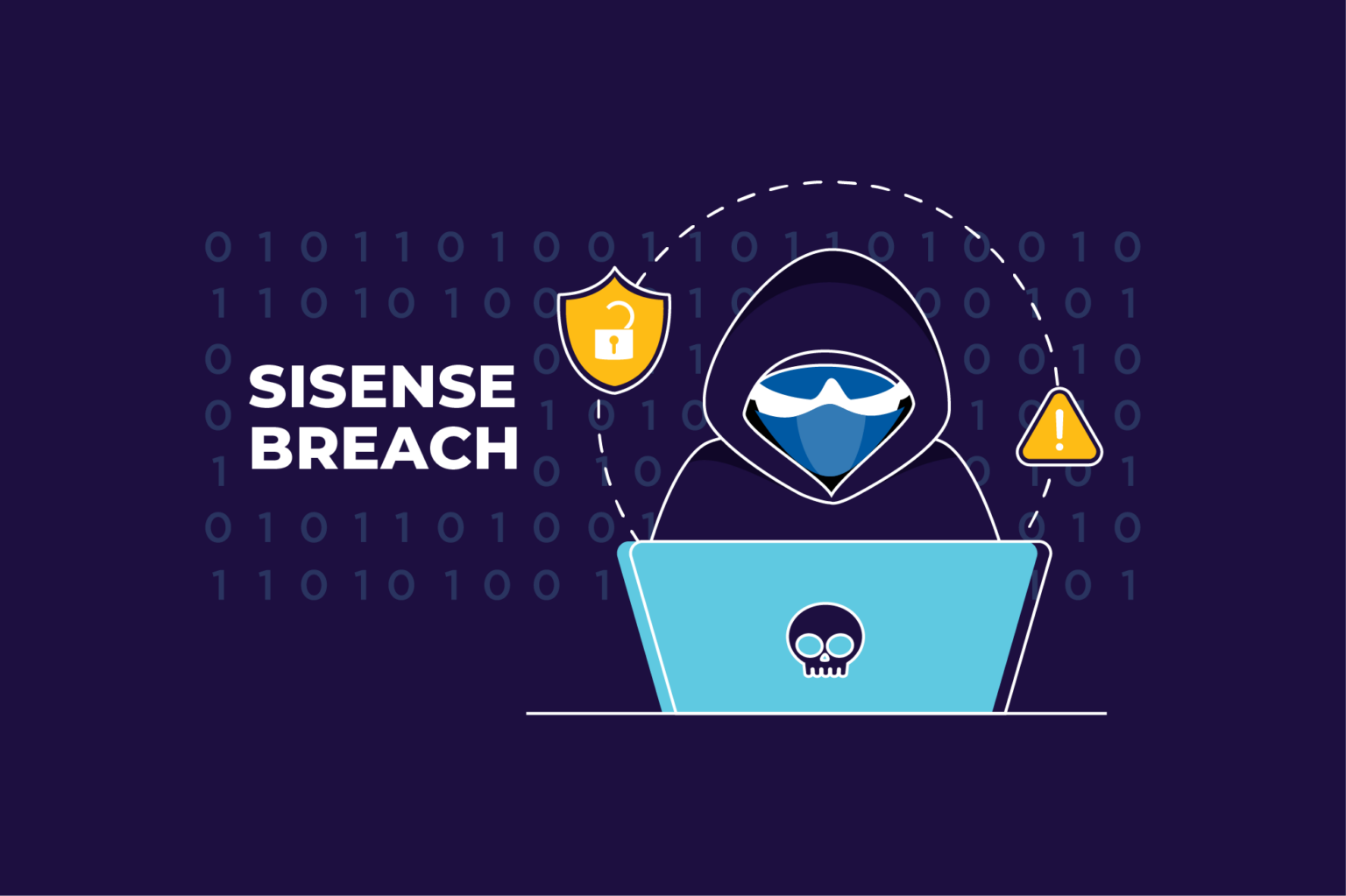You know the drill. Another company’s data is breached, another harsh reminder is served about the reality of cyber threats. This time, the company in the headlines is Sisense, a business intelligence software company that allows users to access and analyze big data.
These high-profile breaches serve as teachable moments for companies to review their own security practices. Did Sisense let its guard down? What can you learn from their missteps? How vigilant are your own systems and employees?
Read on to get an overview of the breach, the types of data compromised, and lessons for companies to learn from.
Overview of the Sisense Data Breach
The Sisense breach has raised significant cybersecurity concerns, prompting the involvement of the US Cybersecurity and Infrastructure Security Agency (CISA). The breach was severe enough to trigger a CISA alert due to the compromise of millions of sensitive data elements, including access tokens, email account passwords, and SSL certificates.
While the company has declined to comment on the validity of the details emerging from the investigation, insights from various sources shed light on the incident’s technical intricacies and its implications for data security practices.
According to reports, the breach originated from unauthorized access to Sisense’s GitLab code repository. This repository contained a crucial token or credential, granting intruders entry into Sisense’s Amazon S3 buckets within the cloud infrastructure. Notably, Sisense was using the self-managed deployment option of GitLab, which offers both cloud-hosted and self-managed solutions.
Once inside the S3 buckets, it’s reported that the attackers exploited their access to pilfer vast amounts of sensitive data, estimated to be several terabytes. The scale and scope of the exfiltrated data has raised questions about the adequacy of Sisense’s data protection measures, particularly concerning encryption practices for data stored on Amazon’s cloud servers.
In response, CISA has issued urgent advisories to all Sisense customers, urging them to reset their credentials and thoroughly investigate any suspicious activities related to this breach. These measures are critical to mitigate further risks and secure the data environments potentially compromised in this attack.
For organizations and individuals using Sisense’s services, it is crucial to follow these directives closely and stay updated with any new information provided by CISA or Sisense as the situation develops.
Who is Impacted by the Sisense Breach?
Sisense has more than a thousand customers worldwide and works with major companies in finance, healthcare, education, and more.
Healthcare organizations, financial institutions, and schools that use Sisense need to be on high alert. These types of companies often have sensitive customer data that could be a goldmine for cybercriminals. Hackers may use stolen login credentials and passwords to access patient health records, bank accounts, or student information.
Startup and mid-sized businesses are also vulnerable. While large enterprises likely have sophisticated cybersecurity teams and measures in place, smaller companies may not. They rely on services like Sisense to help them make data-driven decisions, but may not fully understand the security risks. If you’re a small business owner using Sisense, you need to take this breach seriously and check that your data and accounts are secure.
Individual Sisense users should be concerned too. If you have an account with Sisense for accessing dashboards or analytics, your login credentials may have been compromised. Be on the lookout for phishing emails and malicious links, as hackers may try to trick you into entering your password or downloading malware. It’s best to reset your Sisense password immediately to avoid further issues.
Lessons to Learn From the Sisense Breach
While the details of Sisense’s data breach are still emerging, companies everywhere should take note. Incidents like these are sobering reminders that cyber threats are real and constant. If it can happen to Sisense, it can happen to any company. Here are several key takeaways to consider, especially for companies who do not have an inhouse security and compliance expert.
Don’t Underestimate Vendor Risk Management
Assessing the security posture of third-party vendors, including the big names like Sisense, is paramount. Conducting thorough due diligence to evaluate vendors’ security practices, compliance frameworks, and incident response capabilities should be part of every company’s ongoing processes.
Data Encryption and Protection
Encryption should be a cornerstone of data protection strategies, especially for sensitive information stored in cloud environments. Companies must ensure that encryption mechanisms are deployed consistently across all storage repositories to safeguard against unauthorized access.
Regular Access Reviews
Organizations must implement and monitor stringent access controls and regularly audit configurations of critical repositories like GitLab.
Continuous Monitoring
Continuous controls monitoring of network traffic, system logs, and user activities can help detect incidents and potential breaches in real-time.
Have an Incident Response Plan
Even the most prepared organizations can be breached. Companies need a detailed incident response plan in place to contain and mitigate damage from an attack. Quick and effective response can help limit the impact of a breach and maintain customer trust and reputation. The way Sisense communicates and responds to this incident will be crucial.
GET COMPLIANT 90% FASTER WITH AUTOMATION
Key Takeaways
The Sisense breach underscores the need for strong security practices. While no organization is immune to a data breach, there are certainly key lessons here.
Companies must evaluate any technology their companies use and hold vendors accountable to protect sensitive data. Regular security audits, data encryption, limited access, and continuous monitoring are just a few of the precautions companies should make part of their everyday infrastructure to avoid suffering a similar fate. If the Sisense breach teaches us anything, it’s that cybersecurity requires constant vigilance.
By learning from the mistakes of others, companies can strengthen their security posture and better protect their most valuable asset: data.











